Leela founder talks about celebrating India’s rich culinary tapestry
Jan 25, 2024
If you’re hungry for good food and fascinating stories of the past, new modern Indian restaurant Leela by the lauded Manav Tuli serves up plenty of both. He speaks to Stephenie Gee

The year is 250 BCE. The Maurya Empire of India, founded by Chandragupta Maurya in 322 BCE after overthrowing the Nanda Dynasty, is at its pinnacle of glory under the patronage of his grandson and third Mauryan Emperor Ashoka the Great. It stretches from Kashmir and Nepal in the north to the Deccan Plateau in the south and from Afghanistan and Balochistan in the west to Bengal and Assam in the east, making it what would be the largest empire in Indian history. Internal and external trade, agriculture and economic activity are thriving through the expanse of the empire and beyond. As is Buddhism, which has been steadily flourishing from an esoteric ritual religion to a dominant religious force across Asia – and eventually a major world religion – since Ashoka, following his bloody campaign against the Kingdom of Kalinga, renounced war and converted to Buddhism, devoting himself to peace.
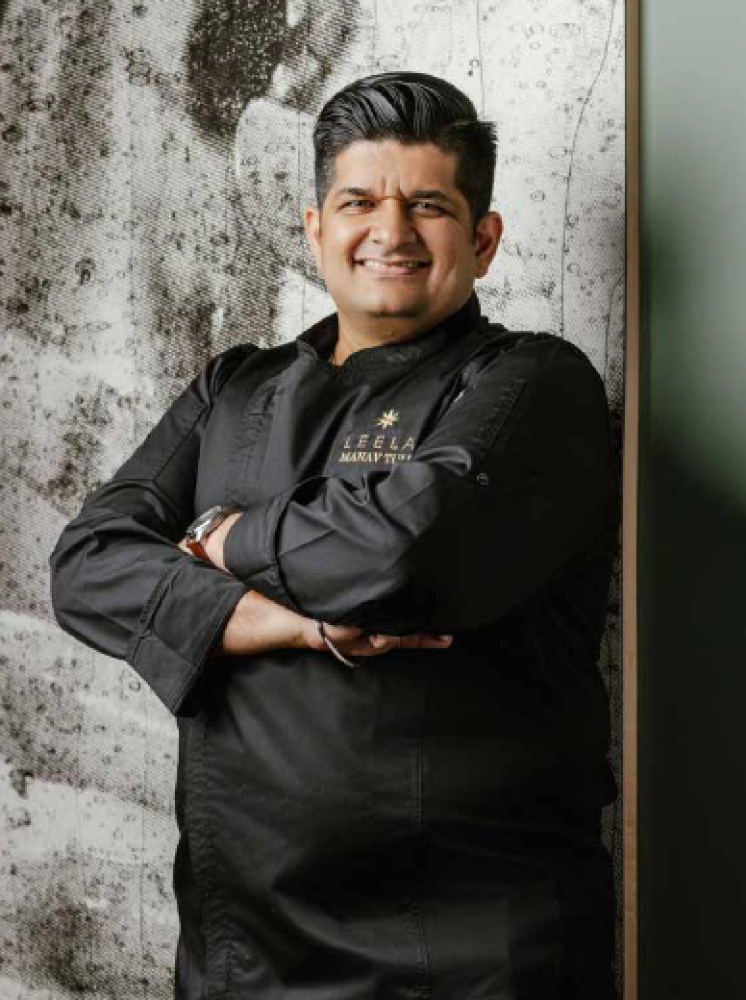
The chef Manav Tuli is telling me this over Zoom one early Friday morning as we catch up about his new modern Indian restaurant, Leela. The 60-seater, backed by JIA Group, is centred around this glorious era and Tuli is explaining why, of all the great empires of India, it is the Maurya Empire that beckons him the most. “Because I feel that that was the real India because they were the only rulers who occupied nearly the whole of India. Even if they want to change the name, I mean, I’m totally fine with that. But that’s what the real community should have been. If King Ashoka can come back, yeah, maybe we can see that empire happening again,” he says, laughing.
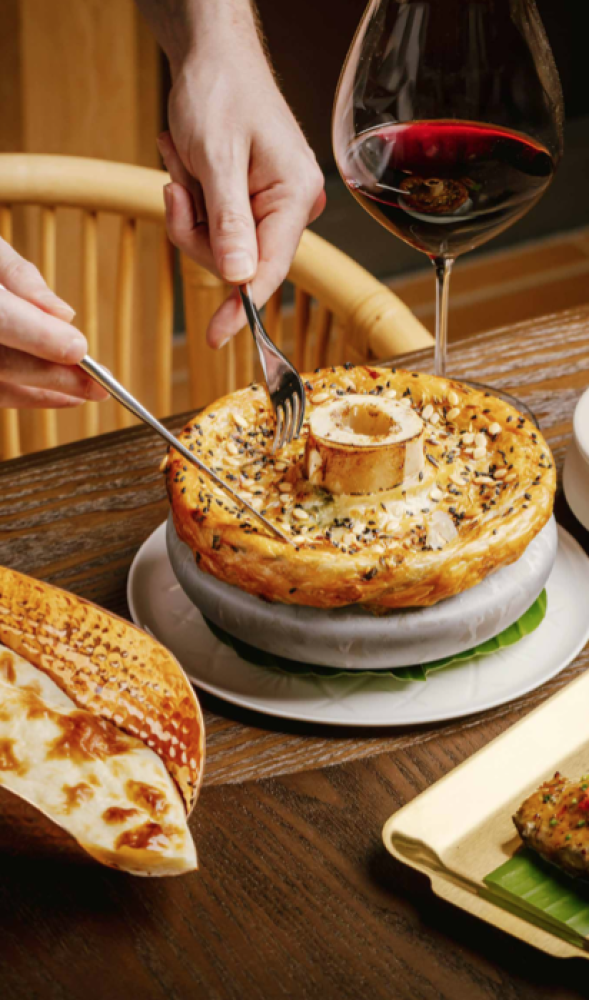
After three years helming Rosewood Hong Kong’s Chaat, Leela is Tuli’s first independent venture in
the city. His departure, back in spring of 2023, was unprecedented. It was, after all, under his tenure that Chaat achieved its meteoric success, including a Michelin star and a place on the Asia’s 50 Best Restaurants list, alongside numerous other accolades. It was only a matter of time, though, because as I learn, Tuli is nothing if not up for a challenge. “I’m adventurous, I’m really career-oriented and I’m a child at heart. I’m always dreaming, always curious, always looking for more to do, you know? If I’m occupied, I’m very happy. If I’m not, I get bored,” he tells me. “And I was getting bored at Chaat. Chaat had achieved whatever it had to in those three years and I was looking for a new challenge.”
So don’t expect a Chaat 2.0, Tuli says. Leela and Chaat should not – and cannot – be compared: “Everything is new. This is Leela 1.0. It’s very different.” His work here is about celebrating the rich tapestry of India’s culinary history, bringing to life the flavours and stories of ancient empires.
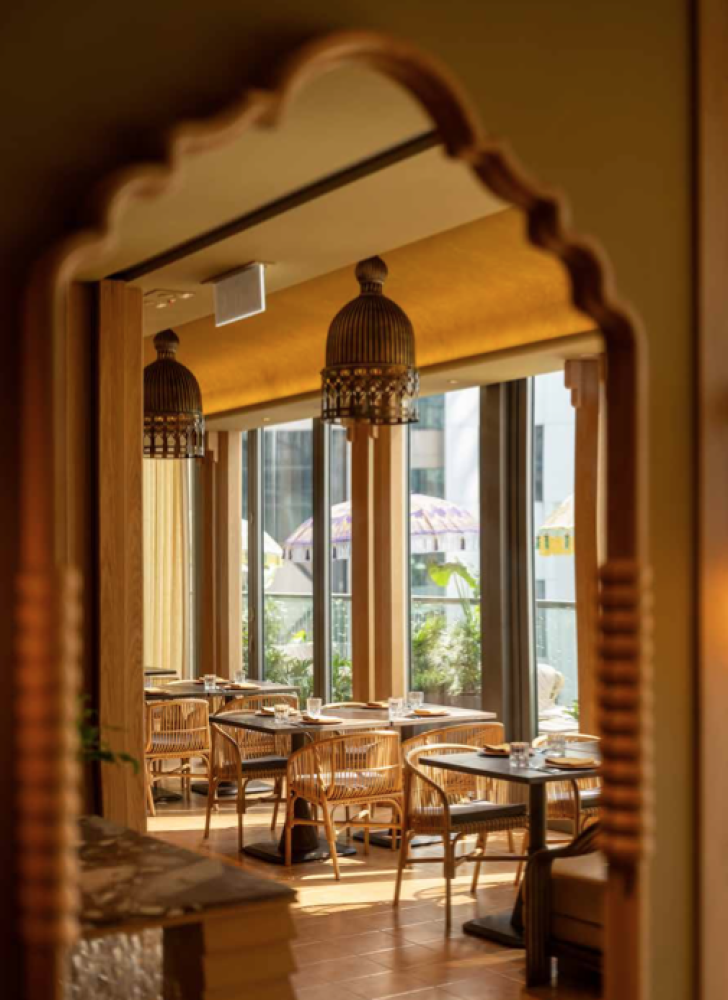
Taken together with the striking interiors by André Fu Studio – which immerse diners in enchanting vignettes of India (think a traditional Uruli fountain, Jharokha-inspired windows and lotus motifs) – Leela serves as a reminder of the deep-rooted connections that transcend modern geopolitical boundaries. “The Maurya Empire used to span from Afghanistan to Bangladesh. So if you look at the cuisine of Afghanistan, Pakistan, Sri Lanka, Nepal, Bangladesh, they are all similar to Indian cuisine,” says the Bhilai-born chef. “I want my guests to, if they want, listen to the stories about the evolution of food that has happened in India. It’s not about just a curry or just a kebab. It’s much more than that.”
Originating in Punjab and popular in Lahore, the chakundar gosht (“chakundar means ‘beetroot’ and gosht means any meat basically”) is a vibrant curry traditionally prepared during the winter season when beetroots are at their best. Tuli’s rendition replaces the mutton with oxtail, spiced with cinnamon and cloves, for an extra layer of collagen richness. “This was a dish that was very popular in Lahore. But then it’s still also cooked in India up till now. So you see remnants of Lahore and India and Punjab, which were in the older times one region,” he adds.
Also see: Sam Aisbett brings creative fine dining to Ho Chi Minh City with Akuna
There’s the Kandhari lamb chop – featuring pomegranate, ginger juice and garam masala – which draws from the Kandhari gosht, a flavourful lamb curry from the Punjab region, whose cuisine has been greatly influenced by Kandahar in south Afghanistan by the Pakistan border. Then, a succulent Saoji lamb shank, the recipe of which Tuli learned from a local woman during one of his travels to Nagpur. He describes it as “not your regular lamb curry”, with a base masala blend made up of 32 spices and jute oil. “Saoji is a small community of weavers in Nagpur, in central India. In search of work, they moved from Madhya Pradesh – another state in central India – to Maharashtra. Once they settled there, they set up their own community and they have a very different way of cooking things,” he says.
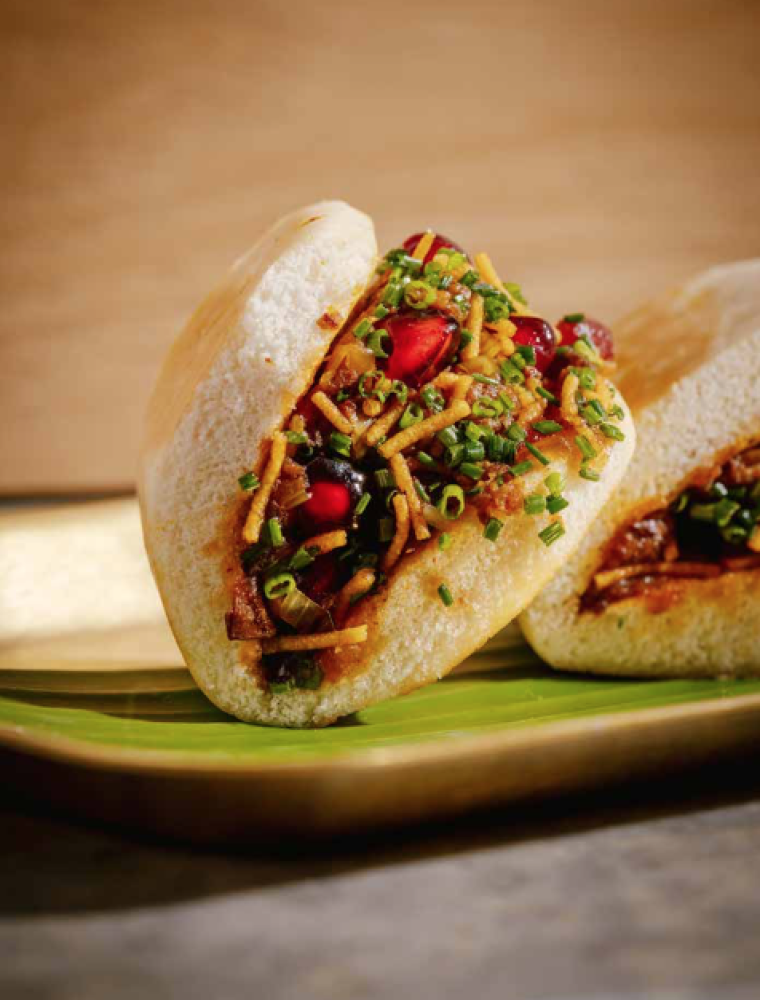
When it came to the execution of Leela, there were two things to consider. One was sustainability: seafood and vegetables are, as much as possible, sourced locally or from nearby markets to minimise carbon footprint; pork is supplied by Wah Kee Farm in Yuen Long; 90% of the spices used are certified organic, GMO-free and pesticide-free; and the wish, Tuli tells me, is to one day have his own small farm growing herbs and vegetables. “We’re trying to play our part in a very genuine manner, so we’ll try wherever we can to put sustainability at front,” he says. As a result, the use of plastic is eschewed throughout the restaurant and the menu is made of recycled corn paper. “The more I read, the more it tells me as to why things are going wrong. Like why people are getting diseases which should not be happening. I’m hyper elevated about PFAS (per-and polyfluoroalkyl substances) nowadays. I’m thinking about what to do with water at my home – I need a reverse osmosis filter.”
The other, refinement. “But refinement is based on style, right? What is refinement to you might be different to what is refinement for me,” Tuli says. What it means for him is simple: to be convenient to eat with a knife and fork, and flavours mustn’t be harsh. He explains, “If anything requires chilli, it should be there. But it should not be a chilli wherein it just hits right at the beginning and then you can’t feel anything else. What I’ve been able to achieve through my many years of experience is that I can turn the chilli around and let it hit you after four or five seconds. That makes you taste and get a different dimension of food altogether. So if you come and eat our most spicy dish, the pork pandi curry, the chilli won’t hit you right at the beginning. You’ll get a few other flavours, you’ll get some spices and then the chilli will come. But when it comes, it won’t stop!”
At Leela, derived from the Sanskrit word leela or lila, meaning “divine play”, you’ll also find yourself chewing your way through elements of playfulness. Take as an example the biryani. “It’s one of the best things,” Tuli says, with aged basmati rice, perfumed with saffron and rose water, encased in a puff pastry shell, pierced in the centre with bone marrow, then baked. “So biryani, there are a lot of stories that it travelled from Persia and then it came to India. But in between whatever happened, it evolved in its own nature, right?” he asks. “So it’s not a dish that originated in India, but then it also tells you a story that India is not only about what geopolitical scene you see right now. It’s much more than what you see on paper. I want to share those stories, which the dishes still sing, you know, of the olden times.”
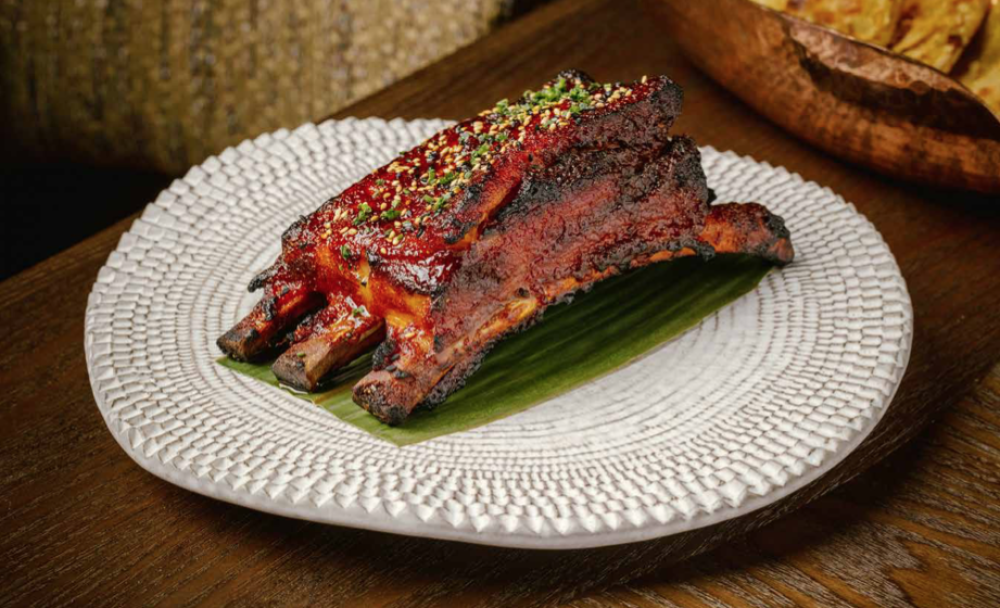
This is all familiar territory. History has – since his days at Chaat, where he introduced a series of interactive curry luncheons explaining to diners the origins and evolution of various regional curries – been a recurring theme for the chef. “History fascinates me a lot,” he says. “A lot of chefs, they look forward in terms of what future technology and other things have to offer. I’m the opposite. I look back to see what history has to offer, and there’s so much diversity and versatility in terms of what India has to offer. One lifetime is not enough to read through everything, let alone make all the dishes or even taste them. I think as much as I can cover as a chef, I will try my best.”
And try he does. Because at the end of the day, Tuli thrives off the rewards. “The happiness of my
guests is more important to me than anything else,” he says, recalling a recent bad day at work. It was Thursday. A guest had pulled a no-show, citing girlfriend issues, and a kitchen staff was going through what Tuli calls “a millennial kind of a thing”: “He was like, all of a sudden, ‘Oh, the kitchen field is not for me!’” Lunch service was hectic and chaotic. Dinner was no different.
“I had been working since 10 in the morning. But then at 10:30 at night when someone tells you, ‘This was the best food I’ve ever eaten,’ it just gives you the energy of ‘Okay, fine, I can do another 10 hours,’” Tuli continues. “That’s what makes me go and this is what success means to me. If a guest tells me, ‘Oh, maybe this wasn’t so good’, or ‘Maybe you could have done…’, it just spoils everything, even if I had a great day. But when my guest tells me that they had a really great time, I think nothing rewards me more than that.”
Also see: Hong Kong chefs share their hopes for the new year



























